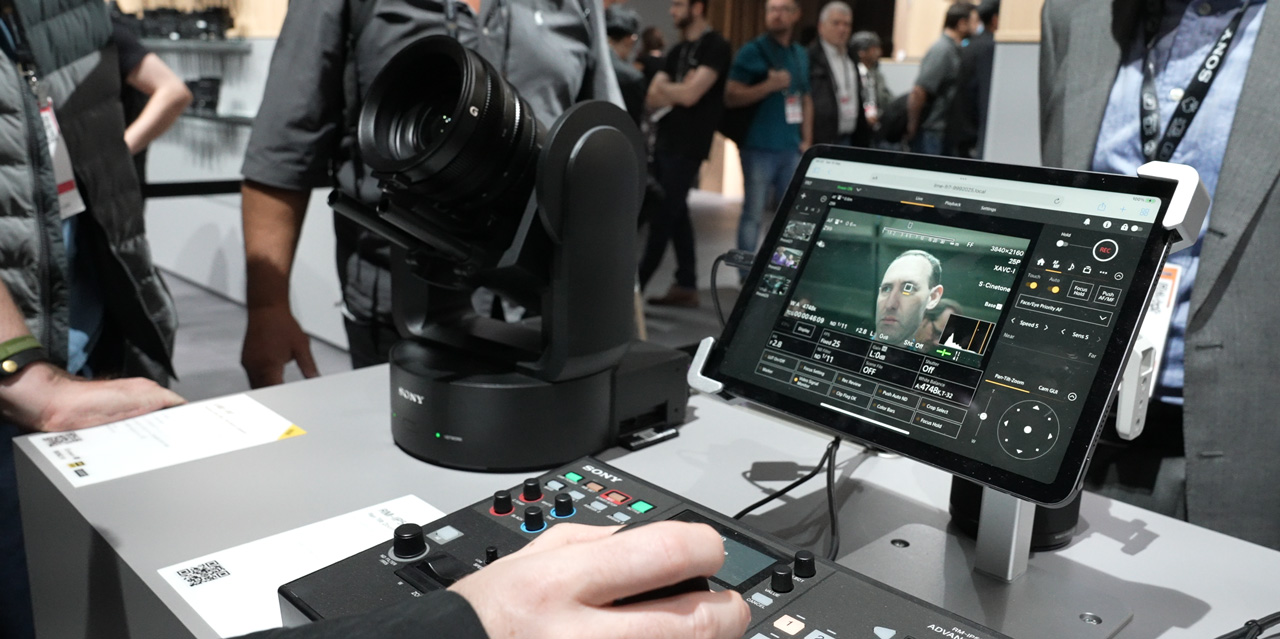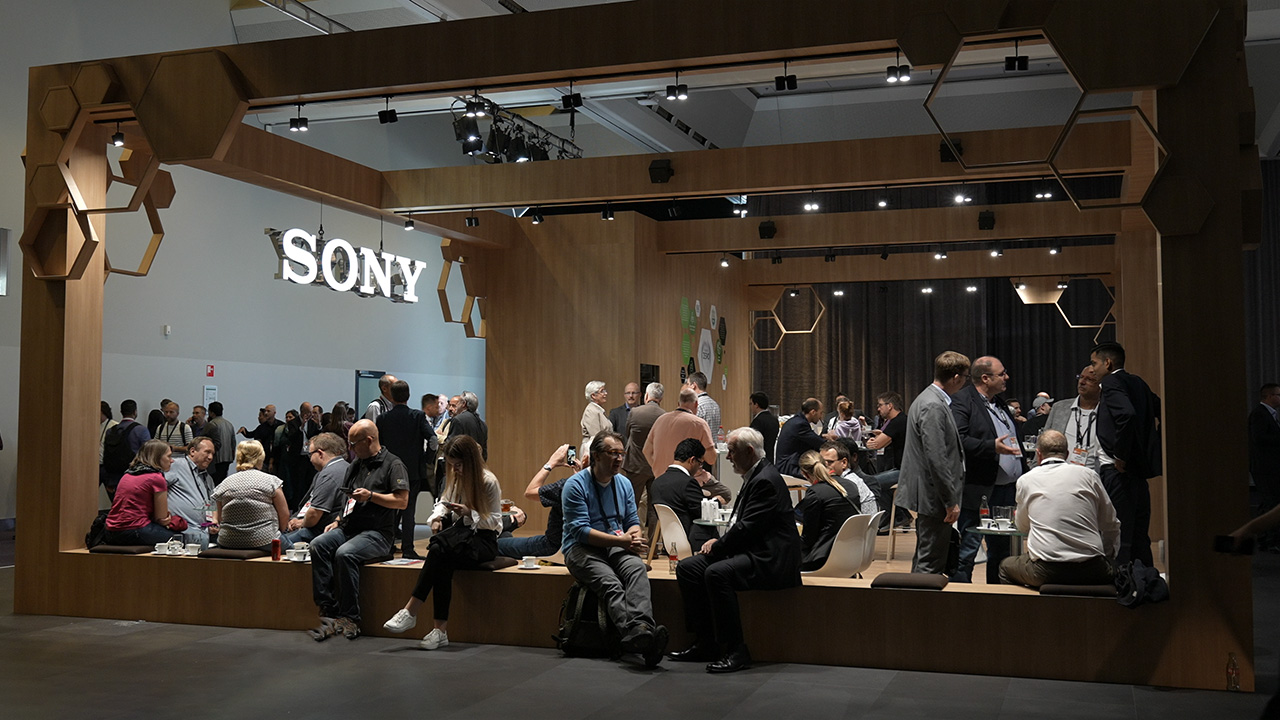During IBC 2022, which ended last month, we had the chance to talk to Mr. Yann Salmon-Legagneur, the Director of Product Marketing & Professional Business Strategy at Sony Europe for a long interview session, talking about a whole range of different topics.
This is our second interview with Salmon-Legagneur in the show. Last week we posted a shorter interview with him discussing the newly released Sony FX30 camera which you can check out here.
Sony Robotic FR7 PTZ Camera
A few days before IBC 2022, Sony announced a surprising product – the R7 PTZ full-frame robotic camera system (we covered it in more depth here). We had a number of questions for Salmon-Legagneur about the camera and its intended market and here is a brief summary of what we got (the answers are not mentioned word by word here, but are more of our summary of what Salmon-Legagneur said in the video):
- Q: Let’s start with the new Sony FR7 PTZ camera that you recently announced. Who do you see as the target audience for the camera?
- A: From Sony’s perspective this camera was designed for the broadcast industry and live music where you can’t place a photographer in some places but you can place a small remotely controlled camera. In the Cinema world, it also has a niche (although Sony sees this as relatively small).
- Q: What are the limitations of the FR7 in terms of capacity?
- A: You can use the FR7 with a 70-200mm + a 2X teleconverter. Bigger lenses are possible but then you have to lock the PTZ mechanism which takes away the main functionality of the camera.
- Sony now has a drone and the PTZ head. Both products are aimed at the very top of the professional market. What about the more common professional users and pro content creators, do you see a place for a more affordable compact version of the PTZ head?
- A: It is always a matter of demand. It is hard to say at this point if there is a market (and how big it is) and what sort of price point will make sense for such a product. At the moment this doesn’t seem to be something that Sony is planning for the near future.
Using the FR7 PTZ camera on the IBC 2022 Sony booth
General Q&A
Besides the questions about the FR7 we had a list of more general questions for Salmon-Legagneur:
- Q: Many of our viewers would like to know if there is any sort of timeframe for the ver 2.0 firmware update for the Sony Alpha 1 camera?
- A: There is no way to give a specific date at the moment. However on cameras like the A9 we have already released about 6 firmware updates and you can be sure that we are not going to leave the users of the top Sony camera without updates and these will come. Any major firmware update requires the work of a large number of engineers to validate the functionality and this takes time. A small update however is going to be released soon (indeed, a few days after IBC 2022 was over Sony released firmware version 1.31 for the A1).
- Q: Only the A7R IV a (and A7R III a) received your updated 2.36M dot LCD while all your other cameras including your more recent ones and even the high-end A1 use the 1.44M dots screen – why is that?
- A: For the A1 the priority was the viewfinder now the monitor and indeed it is the best in class.
- Q: Is there a reason why we are limited by how much we can zoom in into the image when in video mode compared to stills mode?
- A: The answer is that in stills mode the sensor feed is of much higher resolution compared to the resolution in video mode and thus you can zoom in much more in stills than in video.
- Q: Is there a technical reason preventing you from adding breathing compensation to all your current line of lenses? should we expect more of the existing lenses to be included in the supported list in the future?
- A: The reason for some lenses being on the supported lens list for breathing compensation where others are no is the precision needed (optical/digital) to do the breathing correction coming from the lens and how much crop you will eventually get from the lens after the correction (Sony doesn’t feel that getting too much crop makes sense and hence some lenses are left out of the list). Future lenses are all designed with breathing compensation correction in mind.
- Q: Is it technically possible to add parfocal lens compensation for your zoom lenses in-camera in the same way you added breathing compensation and is this a request that you have been getting from professional customers?
- A: This is a very different task. Unlike breathing compensation where the information is there and you just need to calculate the crop, with parfocality you don’t have the focus data and if the image is blurred there is no way to recover this information. So parafocality is only possible with the lens itself (mechanically/optically) and some of our lenses are indeed very good in this respect.
- Q: Let’s discuss computational photography. We have seen some amazing progress done in this field in recent years, much of it is implemented in some of the latest high-end smartphones. However, very few camera manufacturers seem to be moving in this direction. Looking specifically at a camera like the A1 which has a fast processor and 30 fps shooting capability, the ability to combine in camera a fast burst of shots with different settings (shutter, aperture, ISO, etc.) to create a better image seems to make a lot of sense. Is this possible with the current hardware of the camera?
- A: There are already some features like this in the A1 like pixel shift which we see as relevant for the target audience of the camera. Although the processing power of the A1 or even some of the FX cameras might be strong enough it is important to remember that with these types of professional cameras users are looking for a “pure” image while these sorts of features might be more relevant for more entry-level cameras and not so much for A1 users.
- Q: Your Imaging Edge Software is primarily aimed as a tethering tool for shooting stills images, however, we use it quite often to control the camera while shooting video commercials in the studio from the computer. The main limitation of this workflow is that it lacks any type of video assist features – is this something that you might be willing to add in the future?
- A: We know that these are requested features from video shooters and we have this on our “to do list”. I can’t say if this is coming in the near future but we do acknowledge that this is a requested feature.
- Q: Sony has some of the best wireless BT headphones on the market. However, there is no direct way of using them to monitor Sony cameras and no Sony-specific wireless monitoring headphones. In the past, BT latency was an issue but with technologies such as BT 5 and above (which you already have in your latest headphones), this issue is significantly reduced. The Sony A1 for example already has BT 5 – will it be possible to add this type of wireless monitoring to the camera in firmware?
- A: This is not a bad idea. There are however some things to consider when developing such a product. Existing Sony wireless headphones are not monitoring headphones so these will need to be developed to fit the needs of professional users with BT technology. The second question is whether professionals be willing to use BT technology which is not as reliable but for certain target audiences it might be a good fit (like the news segment) and we will be looking into that so thank you for the suggestion.
The Sony booth in IBC 2022
final notes
It was a great pleasure talking to Salmon-Legagneur again at IBC this year (the last time we had a chance to sit down and talk was during Photokina 2018 and much had changed since then). It is important to understand that these types of interviews have understandable limitations on what we can ask (if we want to get any sort of meaningful answer of course). Nobody is going to announce plans for a future product in an interview so there is no point asking about that and even something small as a firmware update is not usually going to be announced during an interview (all these things are planned well in advance).
After doing dozens (if not hundreds) of these types of corporate interviews we come to an understanding about what can be achieved by different types of questions. Our goal with the current interview was to let the people at Sony know about certain things that we feel are important and can be added or improved.
In this respect, the answers in the interview itself can be less important than actually bringing the question to the table and talking to Salmon-Legagneur off camera, we got a feeling that Sony might be open to at least some of our ideas (although this doesn’t mean that we are necessarily going to see any results in the near future).
For more of our coverage on LensVid from IBC 2022 – please visit the following link.

You can support LensVid by shopping with our affiliate partners
Affiliates: Amazon, B&H, Adorama and E-bay.
Why should you trust us?
